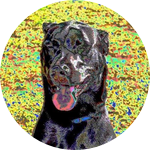About This Project
Butterflies often have impressive iridescent signals that change in spectra, intensity and polarization with different angular orientations. We would like to measure if butterflies have the ability to position themselves with their mates in a way that would optimize their reflections. We propose to use precise GPS timing to triangulate two cameras in the field. We will also quantify the light field surrounding the flight path to correlated this light field with the flight path.
Ask the Scientists
Join The DiscussionWhat is the context of this research?
Butterflies often have impressive signals that are used in conspecific signaling. These signals become even more impressive when fine microscopic structures in the insect's cuticle reflect light in an angle-specific way to create dazzling iridescence that changes in spectra and polarization with different angular orientations. With this amazingly beautiful array of color the butterflies have a significant problem—these signals are only impressive at certain orientations, and the butterfly would need to optimally reflect the ambient light to produce the best color and polarization signal. Could the intricate courtship flight patterns simply be a dance that maximizes their color and polarization signals with each other?
What is the significance of this project?
Iridescence is a common signal used in many animals (e.g. insects, fish, birds, etc), yet how animals uses this ever-changing quality is still a mystery. Quantifying the flight path of courting iridescent butterflies would not only represent a breakthrough in measurement methods in the natural environment, but would also provide invaluable data to learn how to effectively navigate mico Unmanned Aerial Vehicles (UAVs) through natural environments. As UAVs or drones become smaller they will have to interact with the natural world in a way that avoids predation (e.g. bird attacks on drones) and natural traps (e.g. spider webs). Studying how butterflies pay attention to both a complicated conspecific signal and to predators is an ideal study system for micro UAV navigation.
What are the goals of the project?
We propose to use camera correlated precise GPS timing to trigger cameras, enabling visual triangulation between two cameras in the field. From these cameras we can triangulate the flight path of these butterflies to learn if the butterflies spend a significant amount of their courtship flight path in angular configurations that maximize the signal quality of their reflections. We will then take this camera system into the field (e.g. Costa Rica) to measure the flight paths of iridescent butterfly (e.g. Blue Morphos) courtship displays. We will hand track the flight paths in the videos taken and statistically analyze the flight patterns to quantify the angular orientations of the animals.
Budget
I would need a $1500 dollar upgrade to our existing camera systems to increase the timing accuracy of the camera system to enable triangulation of flying insects. I am also requesting $1200 to fund a field exertion to Costa Rica to measure iridescent butterflies (such as the blue morpho) in their natural environment.
Endorsed by
Meet the Team
Parrish Clawson Brady
My research background is diverse ranging from astrophysics
to biophysics, and addresses questions varying from plasma collimation to
polarized communication and camouflage.
My PhD was in laser plasma laboratory astrophysics in Professor at the
University of Texas at Austin where I used laser and electrical discharge
plasmas in magnetic fields to simulate astrophysical jets and magnetospheres in
the laboratory (Brady et al, 2009,2012; Physics
of Plasmas). Concurrently, while
finishing my PhD, I worked with Professor Molly Cummings on a project to
determine if the beetle Chrysina gloriosa
could visually sense circular polarization as they reflect circular
polarization from their exocuticle (Brady & Cummings, 2010; American Naturalist). After graduation I worked as a curator of
entomology at the University of Texas. I
later joined an ONR and NSF-funded project to quantify marine animal based
strategies of polarization camouflage.
For this project I wrote significant parts of the grants, built an
underwater full Stokes division-of-time video polarimeter and other polarization
measurement devices, designed and executed biological experiments involving
polarization, analyzed the data and calculated models based on that data. Using our video polarimeter we measured the
polarized reflectance of a silvery open-ocean fish and found a strong
correlation to a physics based model focused on the ideal polarized reflectance
for omni-directional camouflage (Brady et al., 2013, Proceedings of the National Academy of Sciences), as well as in
situ measurements of open ocean fish camouflage (Brady et al., 2015; Science). We made histological investigations of the
origins of fish skin reflectance (Zhao et al., 2015; Journal of The Royal Society Interface). We also measured that a freshwater fish used
polarization signaling in reference to mate choice (Calabrese et al., 2014; Proceedings of the National Academy of
Sciences). See http://www.bio.utexas.edu/research/cummingslab for more details.
Lab Notes
Nothing posted yet.
Project Backers
- 8Backers
- 10%Funded
- $248Total Donations
- $31.00Average Donation


